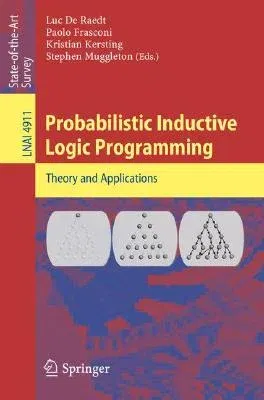One of the key open questions within arti?cial intelligence is how to
combine probability and logic with learning. This question is getting an
increased - tentioninseveraldisciplinessuchasknowledgerepresentation,
reasoningabout uncertainty, data mining, and machine learning
simulateously, resulting in the
newlyemergingsub?eldknownasstatisticalrelationallearningandprobabil-
ticinductivelogicprogramming.Amajordriving forceisthe explosivegrowth in
the amount of heterogeneous data that is being collected in the business
and scienti?c world. Example domains include bioinformatics,
chemoinform- ics, transportation systems, communication networks, social
network analysis, linkanalysis, robotics,
amongothers.Thestructuresencounteredcanbeass-
pleassequencesandtrees(suchasthosearisinginproteinsecondarystructure
predictionandnaturallanguageparsing)orascomplexascitationgraphs, the
WorldWideWeb, andrelationaldatabases. This book providesan introduction
to this ?eld with an emphasison those methods based on logic programming
principles. The book is also the main
resultofthesuccessfulEuropeanISTFETprojectno.FP6-508861onAppli-
tionofProbabilisticInductiveLogicProgramming(APRILII,2004-2007).This
projectwascoordinatedbytheAlbertLudwigsUniversityofFreiburg(Germany, Luc
De Raedt) and the partners were Imperial College London (UK, Stephen
MuggletonandMichaelSternberg), theHelsinkiInstituteofInformationTe-
nology(Finland, HeikkiMannila), theUniversit`
adegliStudidiFlorence(Italy, PaoloFrasconi),
andtheInstitutNationaldeRechercheenInformatiqueet-
tomatiqueRocquencourt(France, FrancoisFages).Itwasconcernedwiththeory,
implementationsandapplicationsofprobabilisticinductivelogicprogramming.
Thisstructureisalsore?ectedinthebook. The book starts with an
introductory chapter to "Probabilistic Inductive
LogicProgramming"byDeRaedtandKersting.Inasecondpart, itprovidesa
detailedoverviewofthemostimportantprobabilisticlogiclearningformalisms
and systems. We are very pleased and proud that the scientists behind
the key probabilistic inductive logic programming systems (also those
developed outside the APRIL project) have kindly contributed a chapter
providing an overviewoftheircontributions.Thisincludes:
relationalsequencelearningte- niques (Kersting et al.), using kernels
with logical representations (Frasconi andPasserini),
MarkovLogic(Domingosetal.), the PRISMsystem (Satoand Kameya),
CLP(BN)(SantosCostaetal.), BayesianLogicPrograms(Kersting andDeRaedt),
andtheIndependentChoiceLogic(Poole).Thethirdpartthen provides a detailed
account of some show-caseapplications of probabilistic - ductive logic
programming, more speci?cally: in protein fold discovery (Chen et al.),
haplotyping (Landwehr and Mielik] ainen) and systems biology (Fages
andSoliman). The ?nal parttouchesupon sometheoreticalinvestigationsand
VI Preface includes chaptersonbehavioralcomparisonof
probabilisticlogicprogramming
representations(MuggletonandChen)andamodel-theoreticexpressivityan-
ysis(Jaeger).


